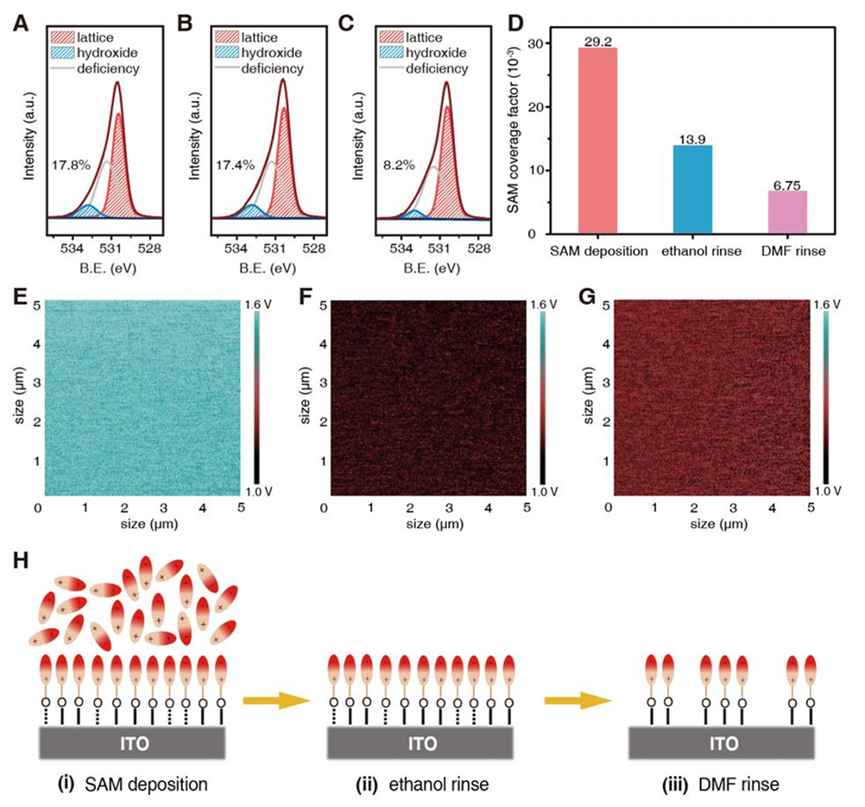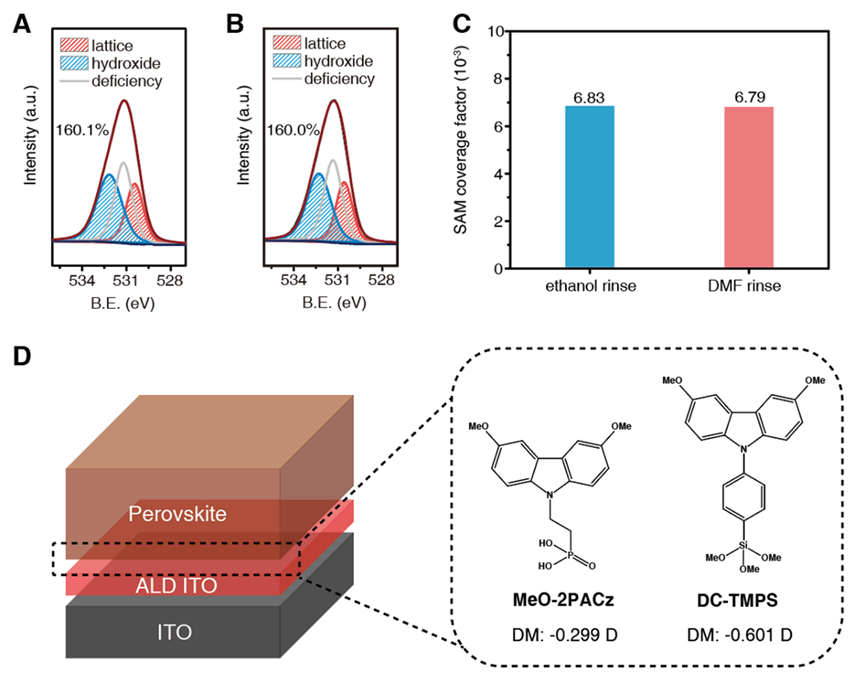Recently, the research group from Shanghai Jiao Tong University have made an important breakthrough in the stability research of perovskite solar cells (PSCs). Relevant work entitled “Reinforcing self-assembly of hole transport molecules for stable inverted perovskite solar cells” was published in Science. Associate Professor Qifeng Han and Professor Liyuan Han are the corresponding authors. Ph. D. student Hongcai Tang and Dr. Zhichao Shen are the co-first authors. The School of Materials Science and Engineering of Shanghai Jiao Tong University is the only affiliation of the research article.
The inverted PSCs are extremely promising to achieve commercialization in the future. Currently, the application of self-assembly molecules (SAM) has resulted in a significant boost in power conversion efficiency (PCE) of inverted PSCs, which is greater than 26% and near to the highest PCE of a monocrystalline silicon solar cell (26.8%). The research group found that strong polar solvents in the perovskite precursor desorb the SAM if it is anchored on ITO substrate by hydrogen-bonded, rather than covalently bonded. Although the unanchored SAM can be redeposited under the perovskite layer after the crystallization of perovskite film, its diffusion during the operation of PSCs would eventually form a non-dense SAM layer, which will lose the blocking effect on electrons and decrease the PCE. The research group used atomic-layer deposition to create an indium tin oxide substrate with a fully covalent hydroxyl-covered surface for SAM anchoring, as well as a SAM with a trimethoxysilane group that exhibited strong tridentate anchoring to the substrate to solve this issue.
The resulted inverted PSCs obtained a PCE of 24.8%. The stability results showed that the devices retained 98.9 and 98.2% of the initial PCE after 1000 hours damp-heat test and operation in maximum power point tracking at 85°C for 1200 hours under standard illumination, respectively. This work provided a scientific and technical reference for promoting the industrialization of efficient and stable inverted PSCs.

Fig. 1. Stability studies of anchored SAM on ITO surface. (A to C) High-resolution XPS spectra of O 1s core level of ITO, ITO after ethanol rinse, and ITO after DMF rinse, respectively. The wine, black, and navy curves are raw, fitted, and background curves, respectively. The value in the figure is the ratio of hydroxide peak area and lattice oxygen peak area. B.E., binding energy; a.u., arbitrary units. (D) The coverage factor of SAM (2PACz) on ITO and after rinsing with ethanol and DMF successively. (E to G) xy-plane surface potential mapping of bare ITO, ITO with 2PACz monolayer (after ethanol rinse), and after successive DMF rinse, respectively. (H) Schematic depiction of deposition and desorption of SAM on ITO surface–connected hydroxyls rinsed sequentially by ethanol then DMF. Dotted line represents a weak hydrogen bond.

Fig. 2. Anchored SAM stability and device performance studies of ALD ITO. (A and B) High-resolution XPS spectra of O 1s core level of bare ALD ITO and ALD ITO after DMF rinse, respectively. (C) Coverage factor of SAM (2PACz) on ALD ITO after rinsing with ethanol and DMF successively. (D) Configuration schematic of perovskite/SAM/ALD ITO/ITO in PSCs using MeO-2PACz and DC-TMPS.
